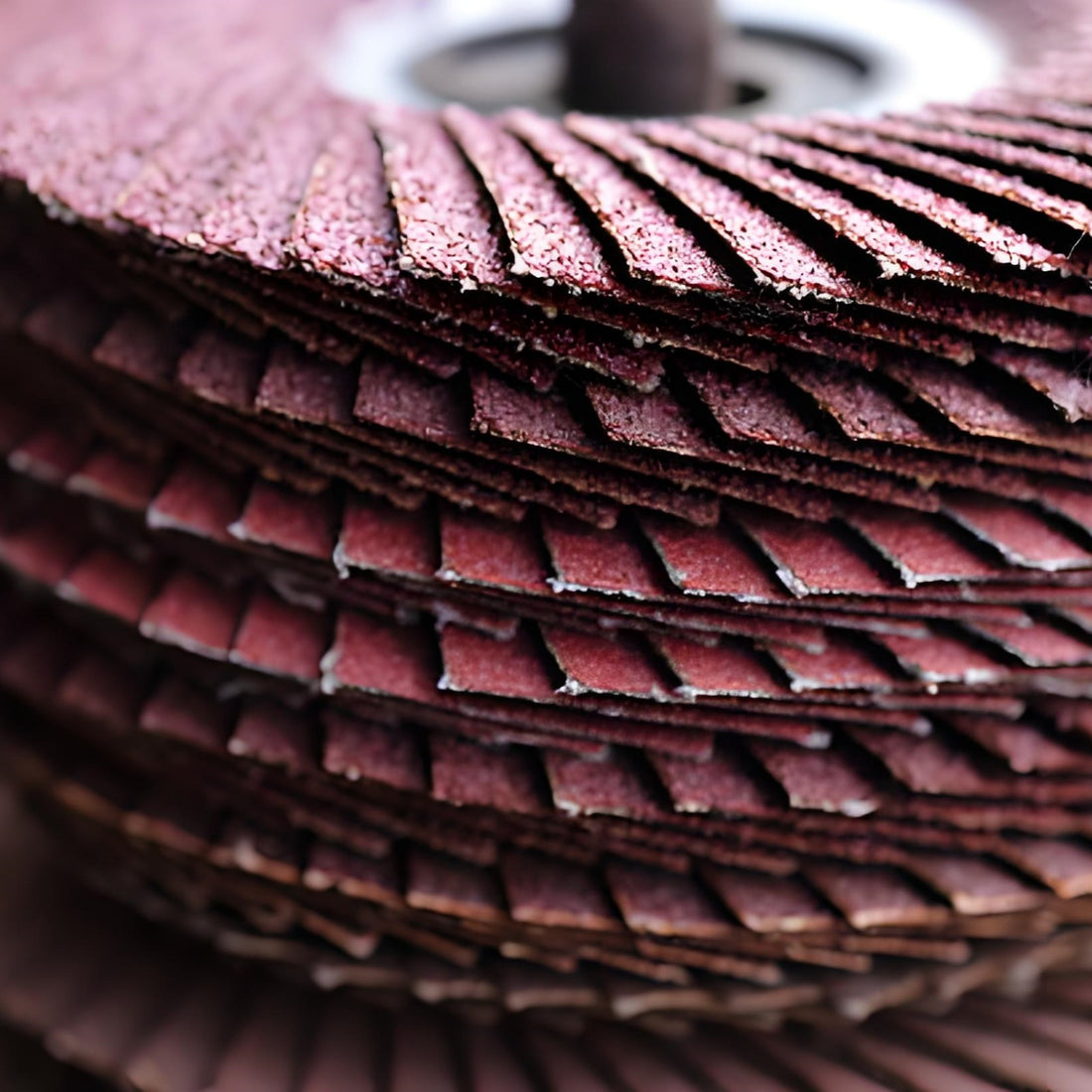
Abrasive belt disc is a very important tool in the world of metalworking and surface treatment. To help you better understand the lifespan of your abrasive belt disc, we have provided you with detailed recommendations for use, storage, and selection. This article will cover the lifespan of an abrasive belt disc, how to properly store and handle an abrasive belt disc, how abrasive belt discs compare to abrasive discs, and some recommended abrasive belt disc models and specifications.
1. Flap Disc Duration
Abrasive belt disc life is a common concern for users. The life of an abrasive belt disc is affected by many factors, including wear angle, operating technique, material type, etc.Main factors affecting flap disc life:
- Wear Angle: The wear angle is the angle between the abrasive belt disc and the workpiece surface. Changes in the wear angle will affect the life of the abrasive belt disc. A lower wear angle (such as 5 degrees) will generally extend the life of the abrasive belt disc, while a higher angle (such as 35 degrees) will shorten its life. A moderate wear angle generally results in better grinding results and longer life.
- Operating Technique: Proper operating technique is crucial to flap disc life. Applying too much pressure or using an incorrect angle can accelerate disc wear. To maximize disc life, it is advisable to maintain even pressure during use and avoid excessive wear.
- Material Type: Different materials have different wear rates for flap discs. For example, steel tends to wear flap discs more quickly than aluminum or other softer metals. When selecting a flap disc, it is important to consider the characteristics of the material being processed.
2. Storage and Handling of Flap Discs
The storage and handling of an abrasive belt disc has a major impact on its lifespan. Improper storage conditions can cause the organic binder in the abrasive belt disc to degrade, affecting its performance and lifespan.Storage Tips:
- Avoid humid environments: Humidity can deteriorate the flap disc binder, shortening its lifespan. It is recommended to store flap discs in a dry environment to avoid the negative effects of humidity.
- Avoid high temperatures: High temperatures accelerate the aging of the disc binder, affecting its performance. Flap discs should be stored in a cool, dry place, away from heat sources.
- Avoid direct sunlight exposure: Exposure to sunlight can cause degradation of the flap disc material, affecting its performance. Direct exposure to sunlight should be avoided to preserve the quality of the disc.
3. Comparison between Flap Discs and Grinding Discs
Understanding the differences between abrasive belt discs and grinding wheels will help you choose the right tool to meet different processing needs.

Features of flap discs:
- Versatility: Flap discs are suitable for a variety of processing tasks including cutting, grinding and polishing. They offer a uniform surface finish, ideal for jobs requiring high surface quality.
- Longer life: Under proper use and storage conditions, flap discs typically have a longer lifespan compared to grinding discs. They offer a balance between durability and finish quality.
- Better Surface Finish: Flap discs can provide a more uniform surface finish, suitable for jobs that require a superior finish quality.
Features of grinding discs:
- Coarse Processing: Grinding discs are primarily designed to remove large amounts of material, ideal for coarse processing work. They are not ideal for detailed finishing.
- Shorter lifespan: Grinding discs have a shorter lifespan and need to be replaced more frequently. While they are effective for material removal jobs, they can leave a less uniform surface.
4. Recommended Models and Parameters
Selecting the right model and parameters for flap discs is essential to achieve the best results. Below are some recommended models and their parameters, suitable for different processing needs:Recommended Model A:
- Usage: Medium load processing tasks
- Parameters: Diameter 115mm, thickness 6mm , suitable for steel and stainless steel
- Features: Ideal for medium intensity grinding tasks, with a long service life
Recommended Model B:
- Usage: Heavy load processing tasks
- Parameters: Diameter 125mm, thickness 7mm, suitable for aluminum and copper
- Features: Ideal for coarse grinding work, with high wear resistance
Recommended Model C:
- Use: High precision polishing tasks
- Parameters: Diameter 150mm, thickness 5mm , suitable for fine metal processing
- Features: Provides a smoother finish, ideal for jobs with high surface quality requirements

